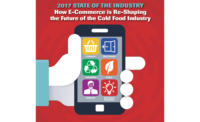Last summer, UPSIDE Foods, a cultivated meat, poultry and seafood company, received approvals needed by the USDA, following a greenlight from the FDA in Fall 2022. That allowed the company to start commercial production and sale of its cultivated chicken. In the U.S., cultivated meat is regulated by both agencies.
Since then, a number of companies, including Meatable, Wanda Fish and Believer Meats, have announced plans to scale production.
Meat cultivation – or cellular agriculture – is the process of manufacturing meat through fermentation. Animal cells are grown in a fermenter, similar to beer and yeast production, and are fed with nutrients, carbohydrates, proteins and vitamins until they mature into muscle, fat and other tissues that make up meat. This process takes several weeks and has the potential to produce meat on a mass scale in a fraction of the time, energy and cost of traditional methods.
As so-called cruelty-free meat moves out of the lab and into the mainstream, what is the current state of the cultivated meat industry and how soon can we expect to see it on menus?
On this episode of From the Cold Corner, Stephanie Lind, founder of Elohi Strategic Advisors, a consulting firm specializing in food and beverage Sebastian Bohn, sub-market leader of alternative proteins at CRB, an architecture and engineering firm specializing in the F&B space, discuss the current state of the cultivated – or cell-based – protein market and what we can expect in the future.
“It's a very interesting and precarious time, I think is maybe the best way of putting it. There's been a lot of improvements and fast change over the last few years that. They are welcomed by those in the space and those looking to get in the space and bring new products to market,” Bohn said. “It's also opened the door, of course, for a lot of the same potential backlash and concerns from the consumer side or local government side. Even if those specific companies that have a product approved want to bring another product out and sell that, they'll have to go through a similar (approval) process.”
Elohi recently conducted independent research into cell-cultured meats and released its findings in a report, The Taste of Change: Consumer Perceptions of Cell-Cultured Meat, which provides insights into the mind of the consumer on this topic. Elohi investigated perceptions of lab-grown meat among a representative sample, from a variety of demographic groups and tracked how product education affected participants’ openness to trial. The research found that 61% of respondents thought they knew what cell-cultured was – with ‘thought’ being the operative word.
“The irony is when we ask the consumer, and the preferred nomenclature from the consumer was lab-grown meat. Now, anybody in this space has probably just passed out because that's the last thing that any of the companies building this want to call it. Part of the challenge here is that the people in the space, the people building the companies, are struggling to agree on what to call it,” Lind said. “So, yes, the consumer cares, but I think they're going to care more when they actually have heard of it; I think only 15% (of respondents) had really heard of it. The way you talk to an investor is totally different than how you would talk to a retailer or food service operator, which is completely different than how you would talk to the consumer. Unfortunately, the proverbial horse is out of the barn, because there's been so much PR in this space to get investment.”
Considerations taken by cell-based protein companies when scaling production include the size and type of bioreactors, growth medium and supply chain concerns.
“I think the list for that is a long one and a challenging one, especially when you start talking about a technology that historically has been taken or adopted from pharmaceuticals, which is at a much smaller scale,” Bohn said. “The volumes that need to be produced for drug substance and those things is, is not the same as the volumes and the total weight of chicken breasts that the U.S. market needs, for example. Some of the key challenges when you're looking at really scaling these processes is one, what is actually feasible and has been done.
“I would say another thing when it comes to scaling, that we've seen, is really taking a look at the location, because when you start to scale in the supply chain of your raw materials, where you want to locate that larger scale facility, both from an infrastructure standpoint to a talent pool,” he said.
The landscape for cultivated protein is advancing quicker in other countries, including Singapore, the Netherlands and Israel.
“I think it's going to be a more important overseas in places like Asia and the Middle East and even Africa, where again, that the ability to grow meat to have arable land to have herds of animals is a lot more difficult,” Lind said.
Both Bohn and Lind agree that it will likely be several years before American consumers are able to find cultivated proteins and meat products on their grocery shelves or widely available in a foodservice setting.
“If I had a crystal ball, I would love to say tomorrow it would be great to see at a larger scale that true consumer feedback. Having tried the product, I've been lucky enough to try some of the cell-based products and, this is anecdotal, but I think it's very good. With that being said, though, from a true timeline, I would say at least, you another five years, maybe a decade out before you're going to start seeing this at a larger scale. The infrastructure of manufacturing just is not there yet,” Bohn said
“At least 10 years, and I think especially so now, because of the funding environment, which I think has slowed. And what I'm hoping is that the brands out there today are using that time to educate the people who make the buying decisions and then the consumers who will buy it from those retailers and operators,” Lind said.
For more, listen to the complete podcast in the player above or wherever you get your podcasts.



